To address complex scenarios in real-world environments, collaborative research involving multiple intelligent agents has become essential. However, centralized methods fall short when the system scales up. Studies on multi-agent swarms based on self-organizing system control have the capability to accomplish complex tasks.
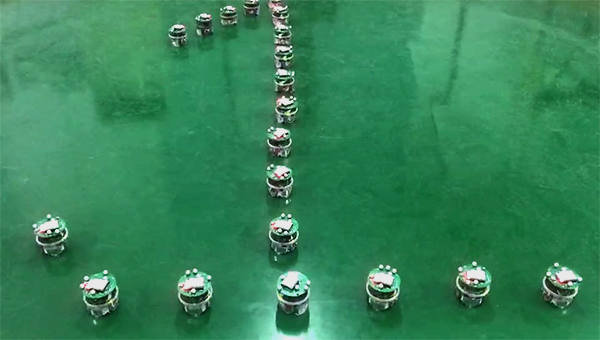
Robot experiments are a necessary tool for the study of intelligent agent swarms
When conducting research on intelligent agent swarms, the performance of a robotic system established through different design methods is measured by its ability to achieve the intended behaviors. This performance is validated mainly through three approaches: dynamic modeling, computer simulation, and robotic experiments.
The dynamical model uses stochastic processes and dynamical methods among other theoretical tools to verify system convergence. Although more abstract than other methods and requiring many presuppositions, it faces challenges like noise in practical agent cluster processes, preventing a unified model.
Computer simulation uses computers to model the interactions between the environment and agents, as well as interactions among the agents themselves, to verify and optimize system performance. This method can be used to validate large-scale robotic systems and improve the efficiency of system verification. However, communication noise, ground friction, and inter-agent collisions in the real environment may affect individual agents and consequently influence collective behaviors, meaning simulations cannot fully replicate real-world scenarios.
Most robotics experiments are conducted in controlled laboratory environments, where variables such as lighting intensity and ground friction coefficients can be precisely regulated by researchers. These experiments also account for real-world complexities such as environmental noise, collisions between agents, and communication interference, making them essential for validating the feasibility and robustness of robot systems.
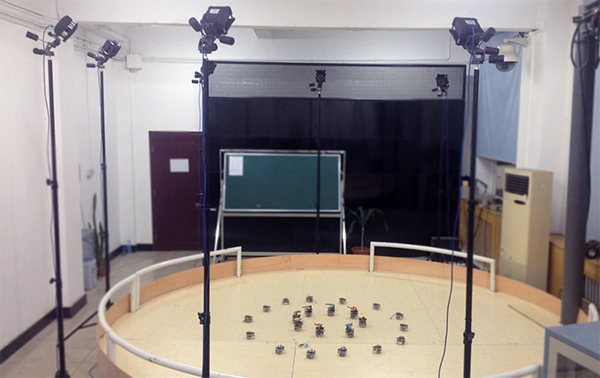
Motion capture system addresses multiple pain points in the intelligent agent cluster experimental system
As the main component of optical motion capture systems, the resolution, frequency, and field of view of optical cameras directly affect the accuracy and effectiveness of the entire motion capture system.
Due to weak indoor signals, GPS cannot achieve indoor positioning. Current indoor positioning solutions include laser SLAM, visual SLAM, optical flow, and UWB, among others. The primary issue that needs to be addressed with all these positioning methods is the low positioning accuracy (with the highest accuracy being UWB at the centimeter level). Additionally, there are other limitations such as the high computational resource consumption by visual positioning methods and the requirement for UWB power to be below a certain threshold (to avoid interference with other communication devices), which greatly restricts their use in indoor experimental environments with limited space and high density of intelligent agents.
Utilizing motion capture systems as an indoor positioning solution for multi-agent systems effectively resolves the aforementioned issues.
The NOKOV motion capture system, as an external device, uses optical motion capture cameras positioned around the area to capture reflective markers affixed to various entities. By computing the 3D spatial coordinates of these markers, the system determines the position of the entities (and also posture information from multiple points on the same entity), achieving sub-millimeter accuracy. Since the motion capture system computes position information itself, it does not use the computational resources of the entities. As an external device, it can also reduce the payload on drones. The NOKOV system can simultaneously locate more than 40 entities, with a sampling frequency of up to 380Hz and a delay of about 4ms, meeting the fast response requirements of drones and similar applications.
Multi-Agent Cluster Experimental Platform
Below are introductions to several multi-agent experimental platforms based on motion capture.
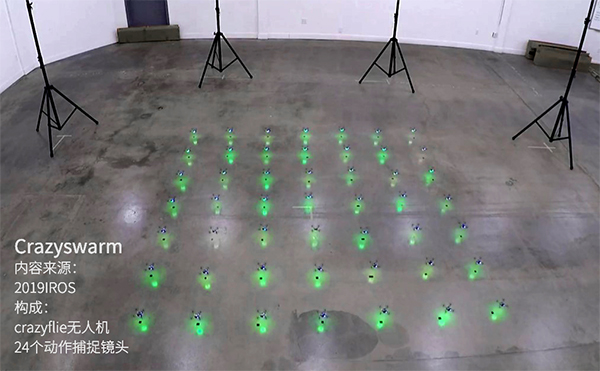
Crazyswarm is an experimental platform for drone swarms based on the Crazyflie. The platform is developed for drone swarm researchers to address pain points such as indoor operation of multiple drones, small individual volume, high positioning accuracy, and open-source software. Crazyswarm proposes the currently largest indoor drone swarm system architecture. The system uses onboard processors for computing, enhancing communication robustness, and requires less bandwidth.
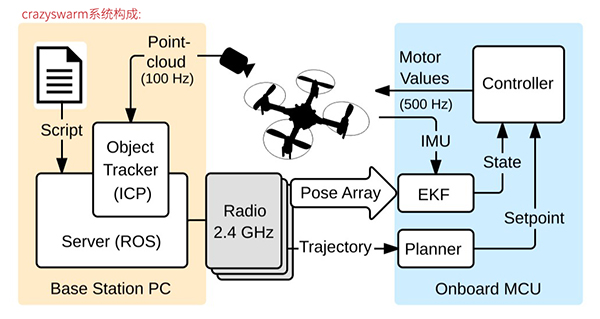
Since motion capture systems use different arrangements of markers on drones to identify each unit, there isn't enough space on drones to design completely unique marker arrangements when dealing with large-scale drone swarms. To address this issue, Crazyswarm proposed using the method of locating drones with the raw point cloud from the motion capture system, which requires two conditions to be met.
It is necessary to know the initial positions of all the drones in order to establish a mapping between their IDs and physical locations.
② Tracking must be done frame by frame; if a marker is obscured for an extended period, the algorithm may not be able to re-establish the ID-position mapping.
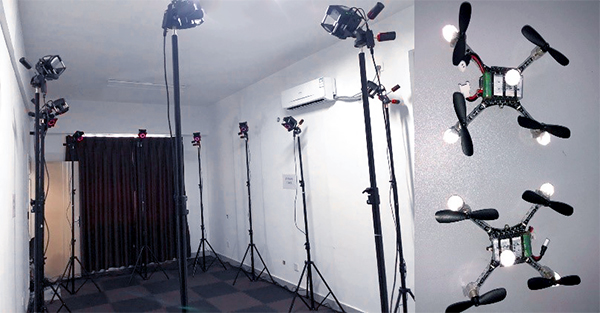
Research directions utilizing Crazyswarm for experiments include attitude estimation, trajectory planning, formation control, machine learning, distributed optimization, and formation performance. The University of Electronic Science and Technology has conducted research on drone formations using the Crazyswarm platform, equipped with 12 NOKOV optical Motion Capture Cameras.
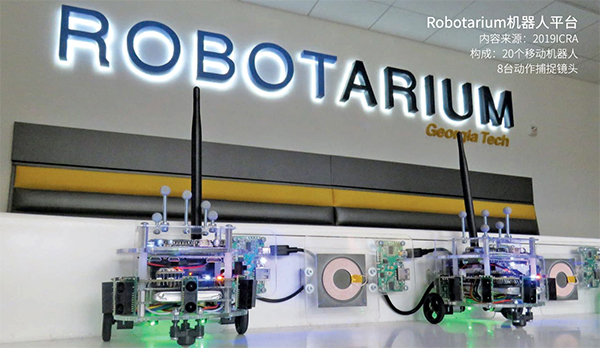
For many researchers, building a testbed for distributed control of mobile robots is costly. The Robotarium provides a cluster of robots research platform that can be accessed remotely, allowing researchers to upload their algorithms and validate them on real robots, as opposed to purely simulating them. The Robotarium platform is capable of running dozens to hundreds of robots simultaneously, and since its opening, it has completed over a thousand experiments.
In the Robotarium platform, eight motion capture cameras are installed above the periphery of the test platform to track each robot's movement and for data collection and control. Each robot is fitted with uniquely arranged reflective markers to differentiate individuals. Because the motion capture system has a wider capture range, sub-millimeter positioning accuracy, and a higher sampling rate, the Robotarium platform has opted to use motion capture instead of visual camera tracking systems. From the perspective of hardware safety, the speed, accuracy, and precision of the motion capture system enable the Robotarium platform to detect potential dangers during unknown experiments and make automatic corrections.
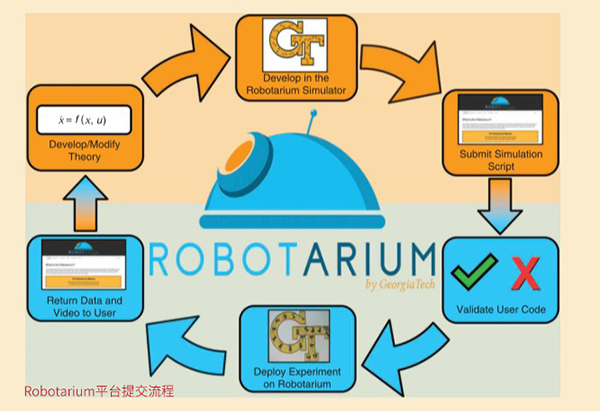
[3] Liu Qi. Biomimetic Study of Gecko Adhesion Contact Area and Behavior Over External Angles [D]. Nanjing University of Aeronautics and Astronautics, 2019.
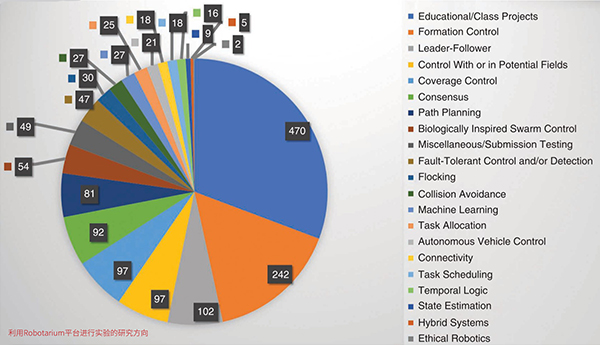
Institute of Automation, Chinese Academy of Sciences Intelligent Cluster Platform
The intelligent unmanned swarm system is a demonstration and verification system for individual and group intelligence co-developed by the Intelligent Technology Team of the Institute of Automation at the Chinese Academy of Sciences (CAS) and the Taizhou Institute of Intelligent Manufacturing, CAS. This unmanned swarm system can achieve functions such as individual unmanned vehicle and drone control, coordination between ground and aerial units, swarm combat, as well as formation performances by unmanned vehicles and drones. It also features a highly open SDK, capable of real-time transmission of information such as location and speed of unmanned vehicles and drones back to the command system. This can be used for youth science education, training, in-depth secondary development by universities or research institutes, as well as applications in regional logistics and civil-military integration industries. Additionally, the team has a large-area, high-precision NOKOV motion capture system for indoor use, which can capture and track hundreds of targets in real-time within dense areas.
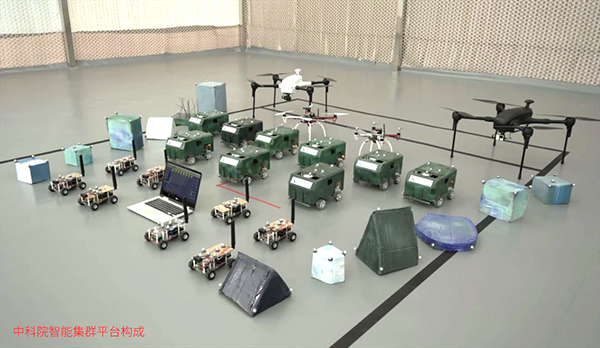
Unmanned swarm systems rely on perception and communication systems to obtain external environmental information and assistance from other platforms. The perception system includes many sensing modules, including IMU modules, remote control receiver modules, wireless communication modules, etc. These module interfaces are versatile and can be replaced and transferred according to different task requirements and performance.
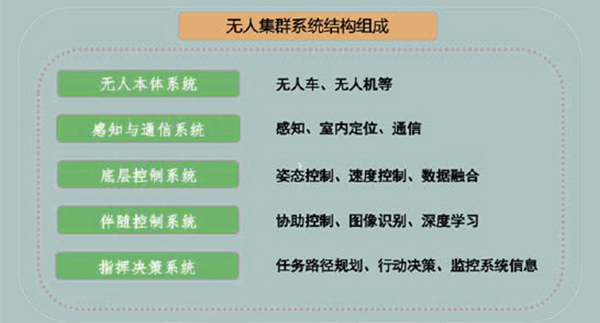
For situations that require high accuracy, the platform is equipped with the NOKOV optical 3D motion capture system to provide precise position and pose information.